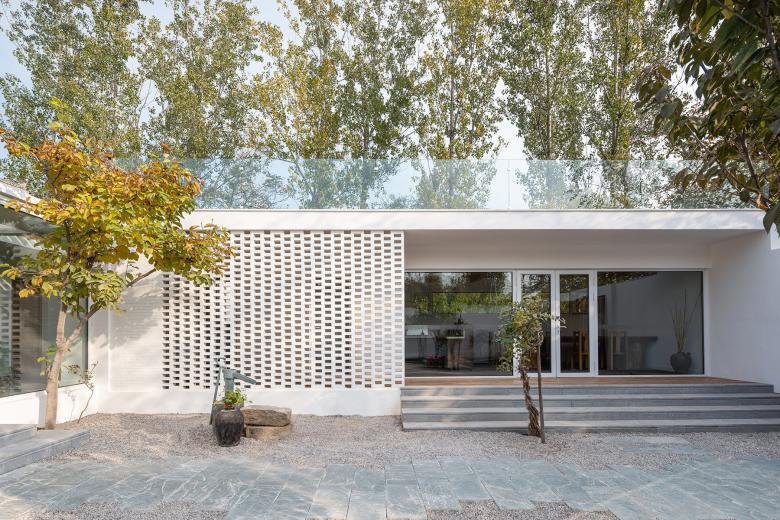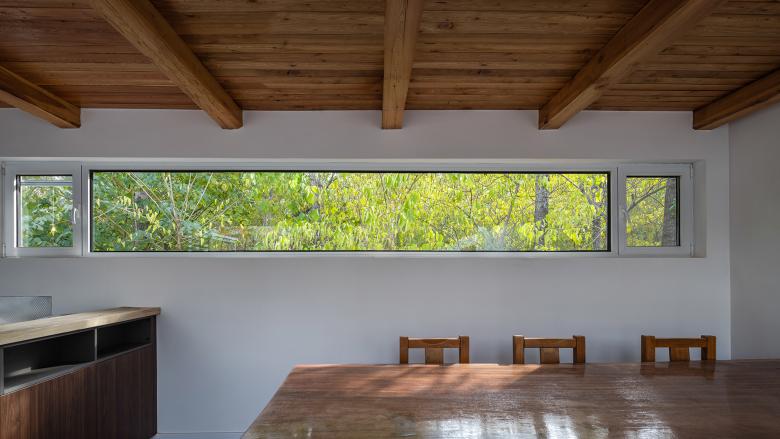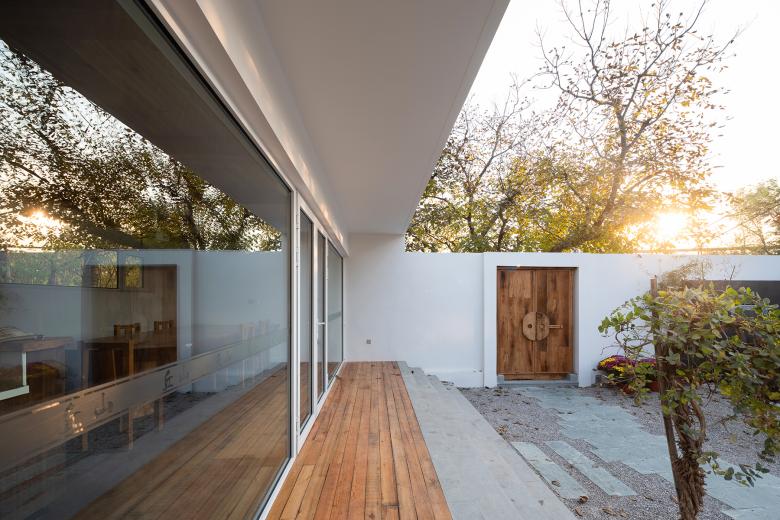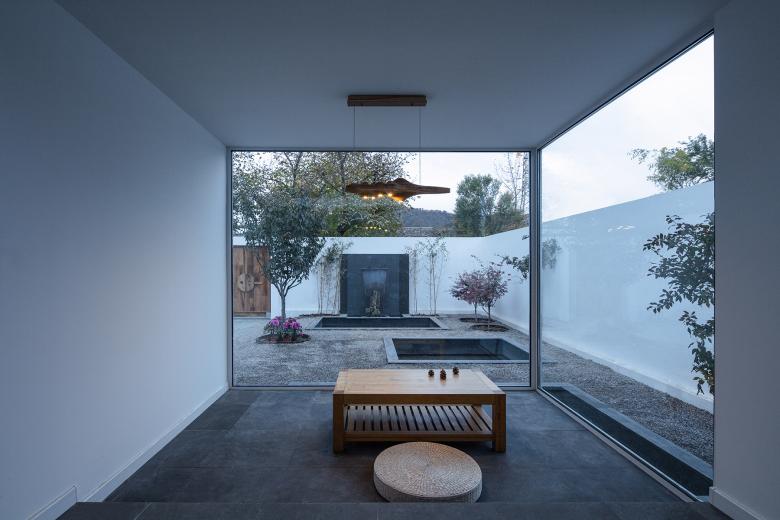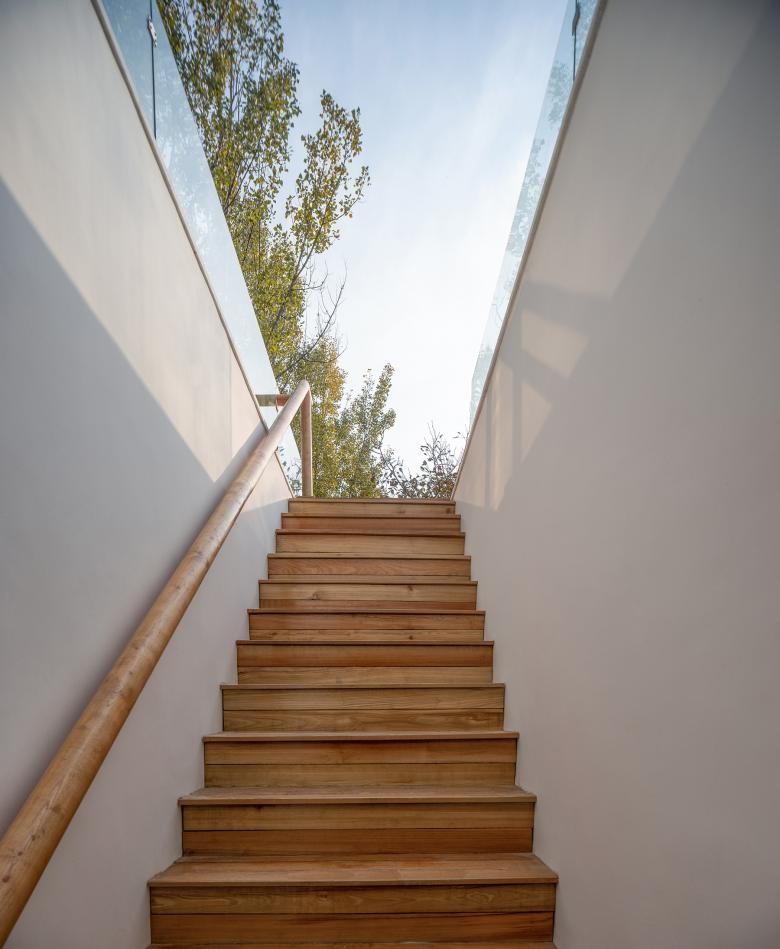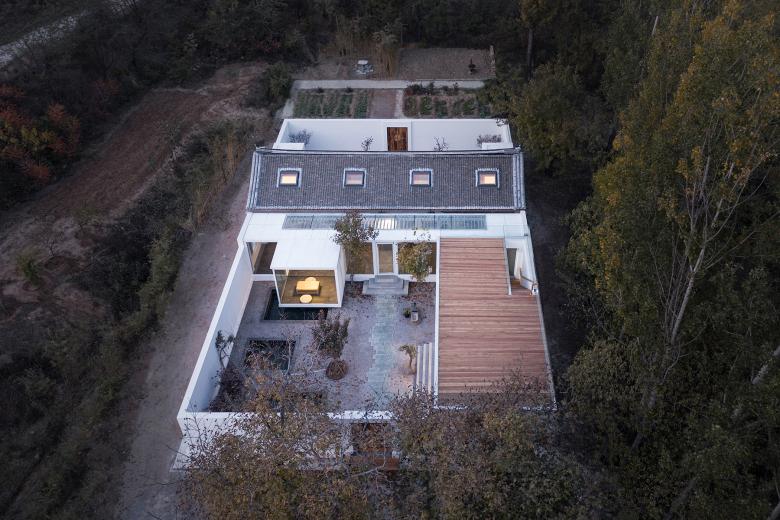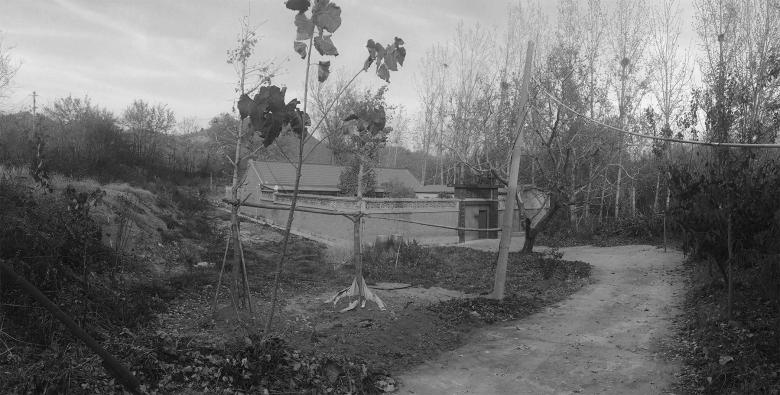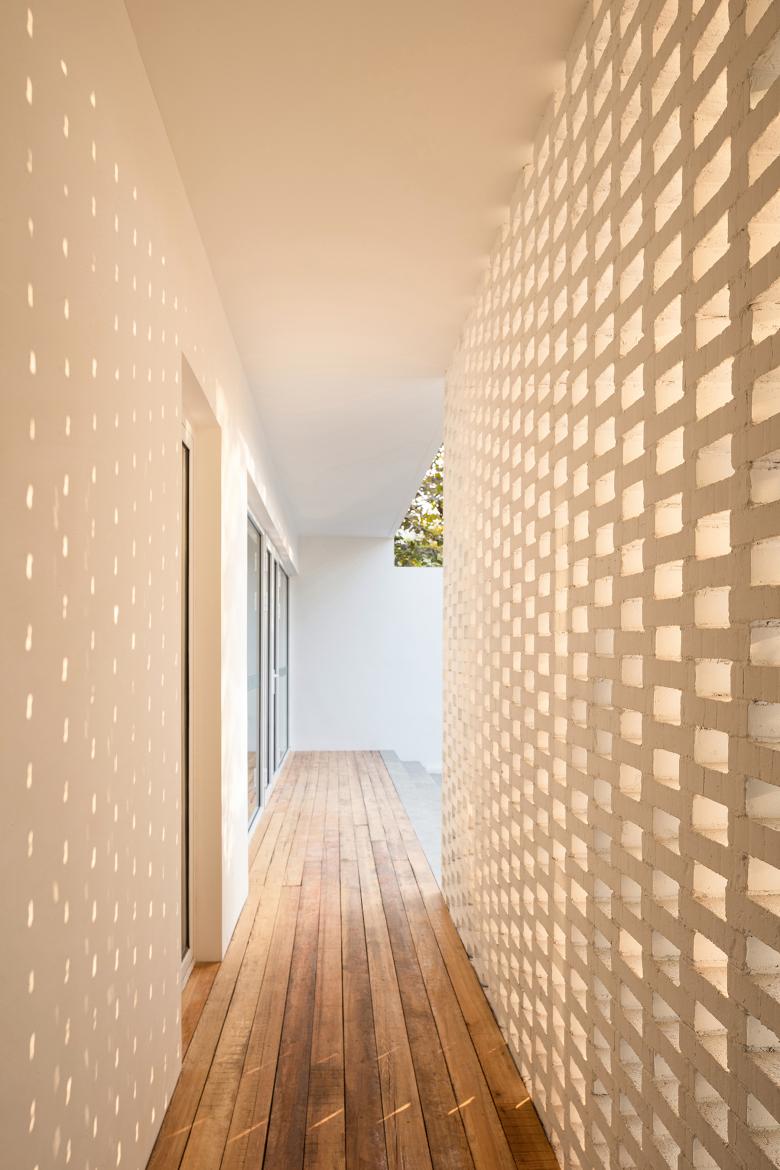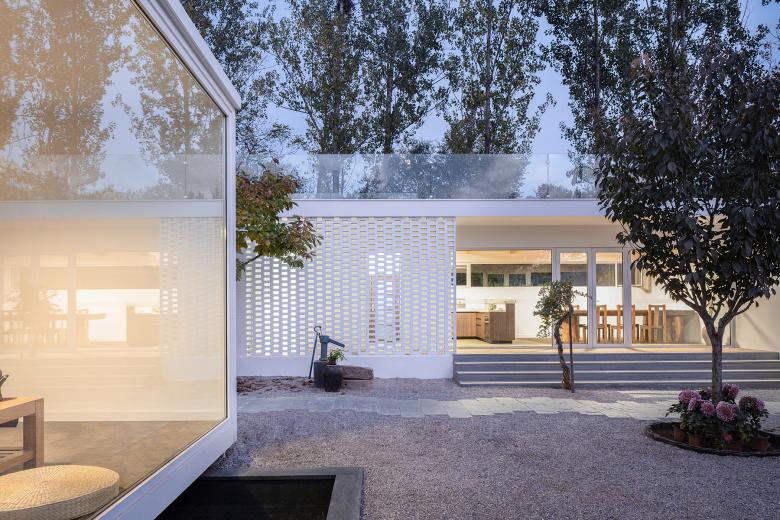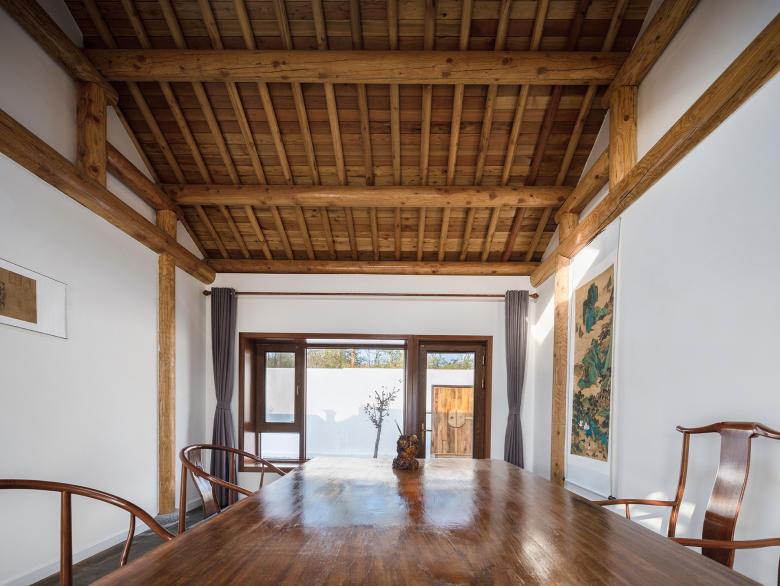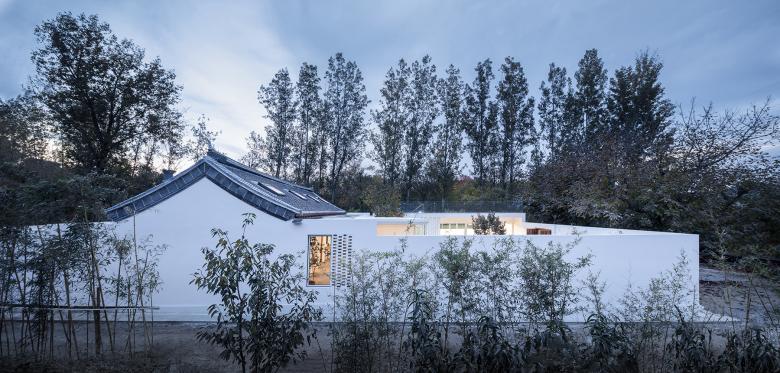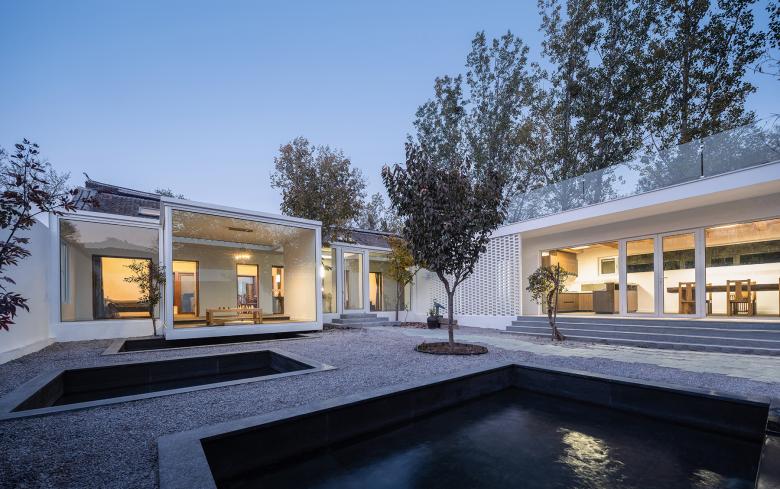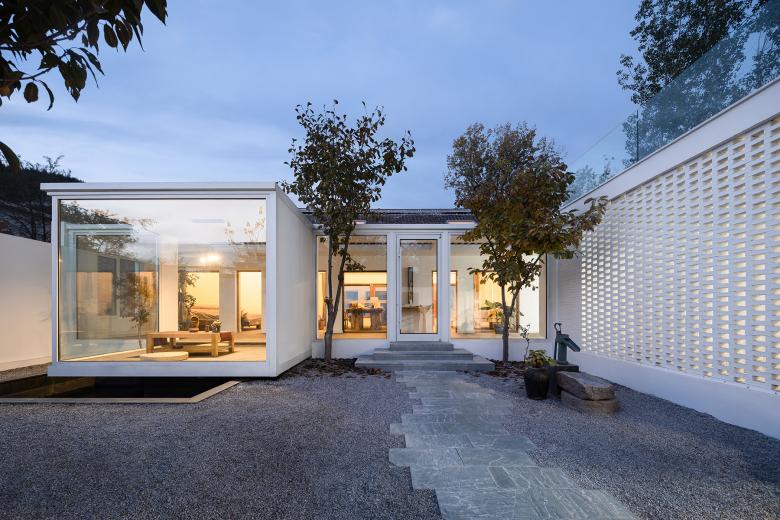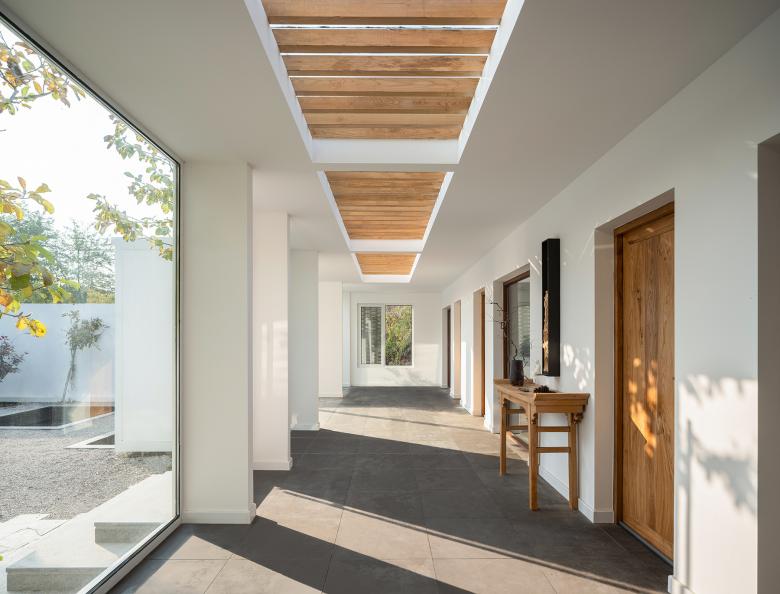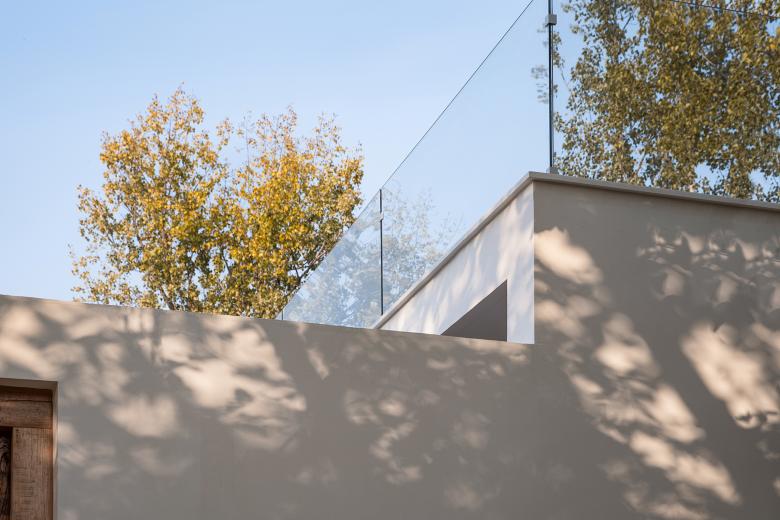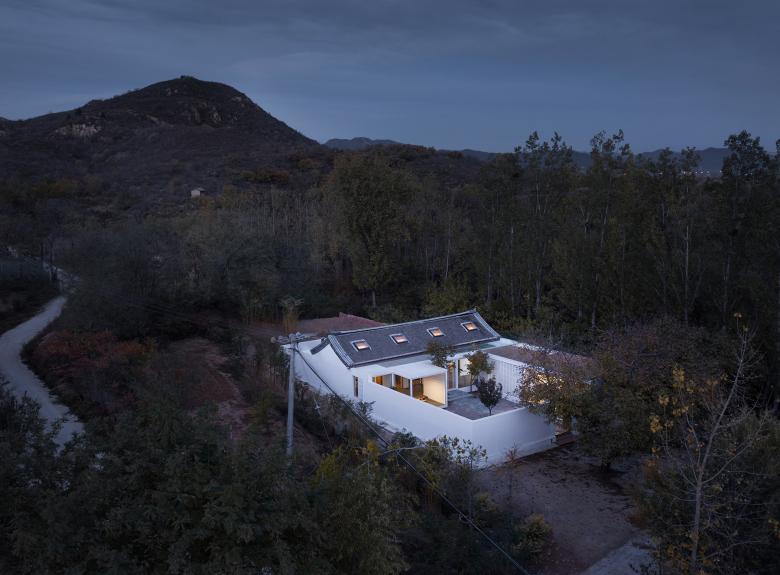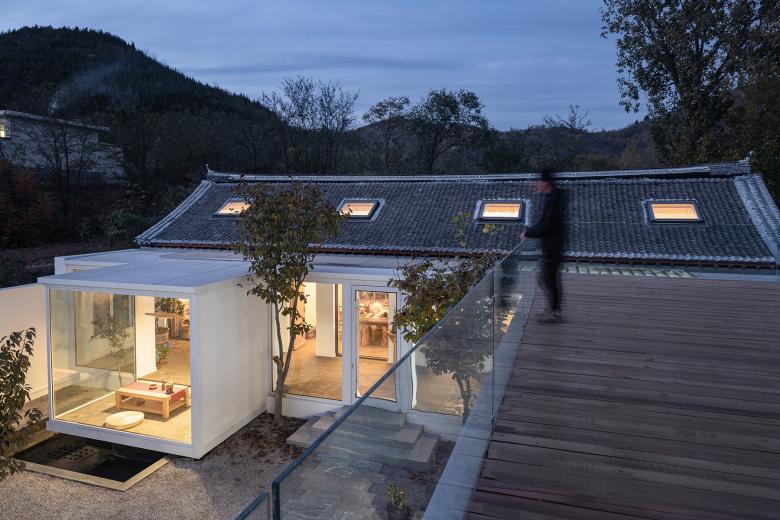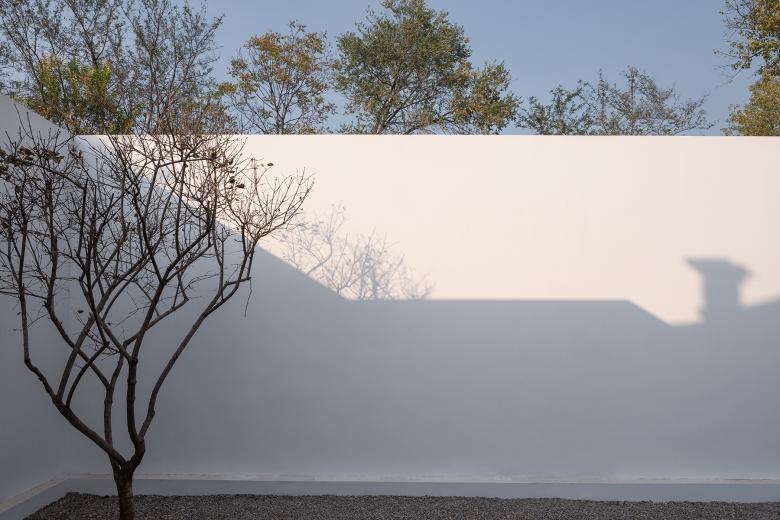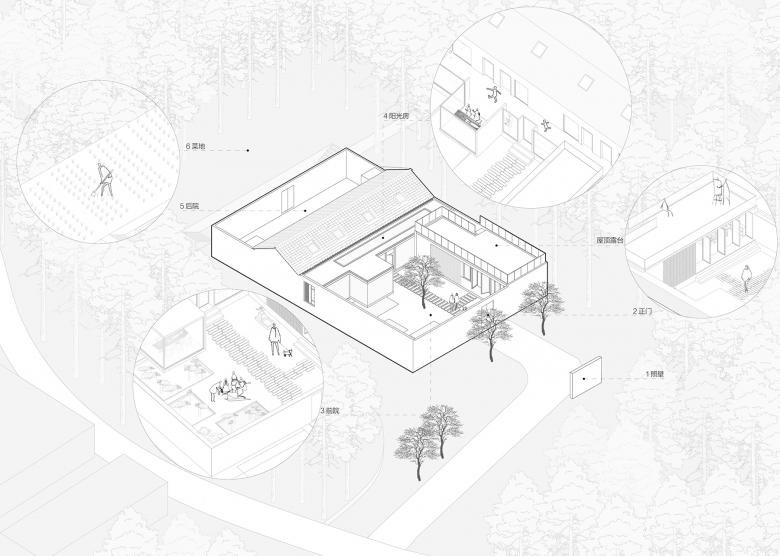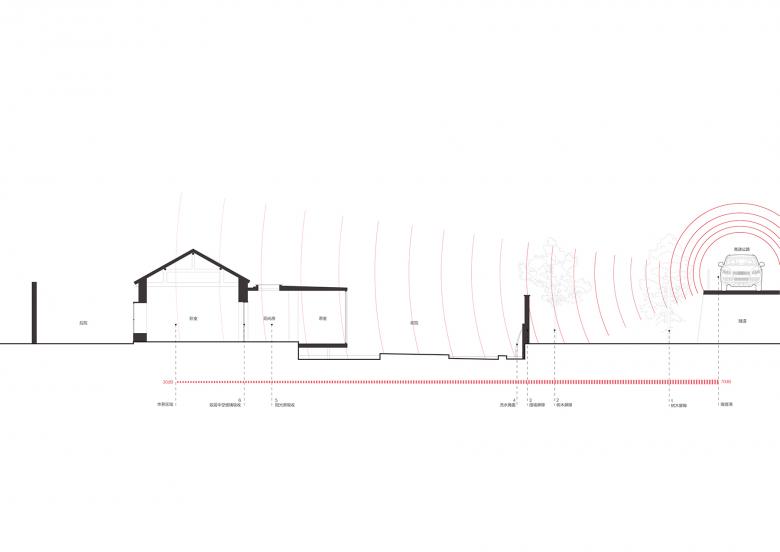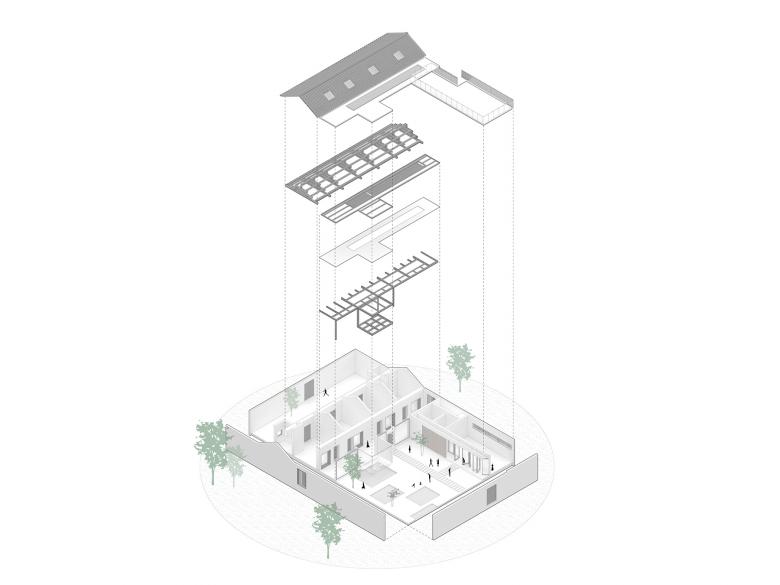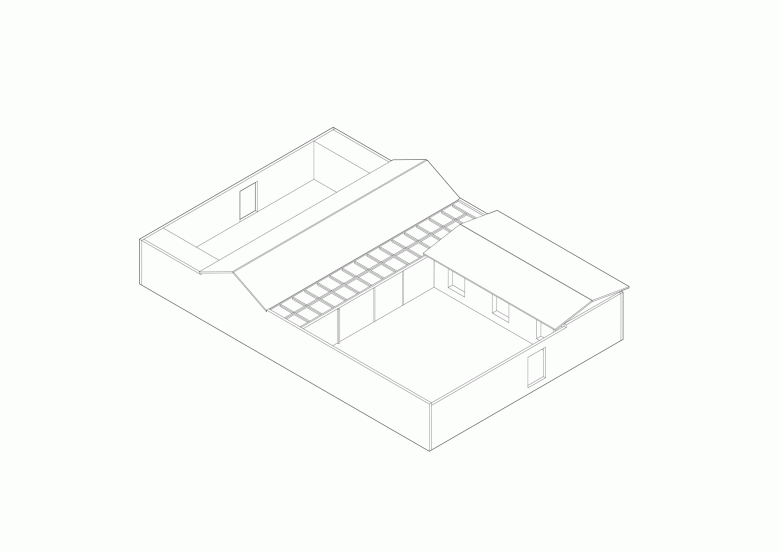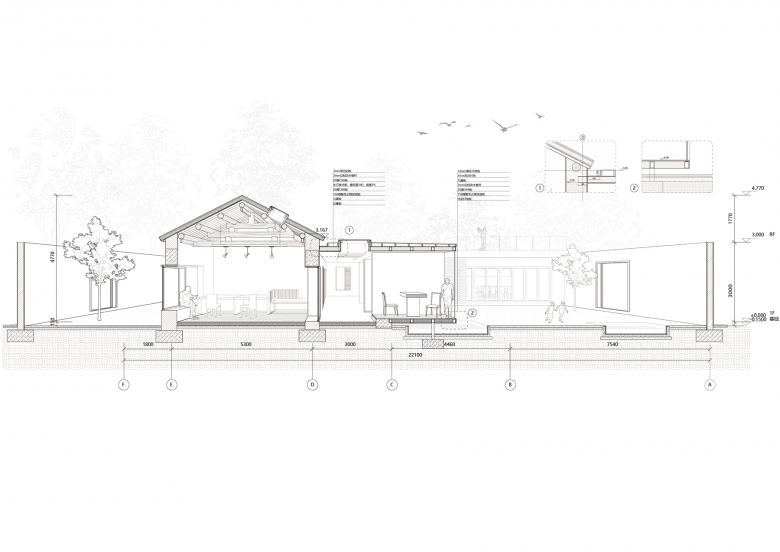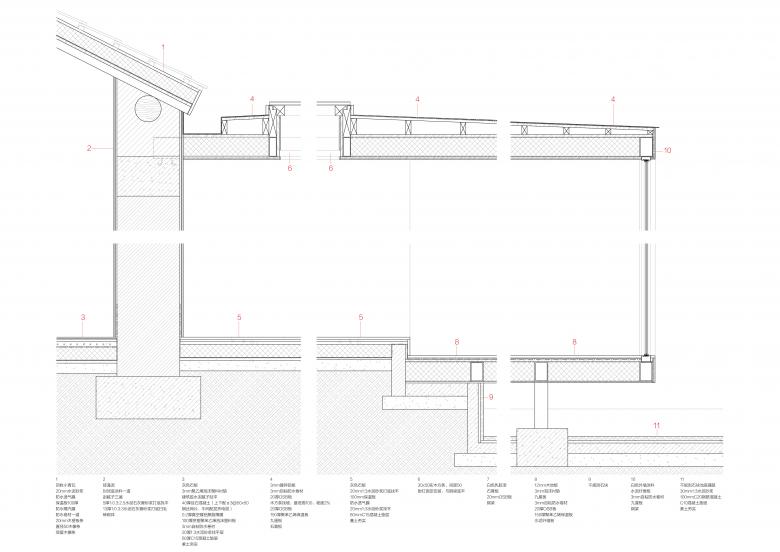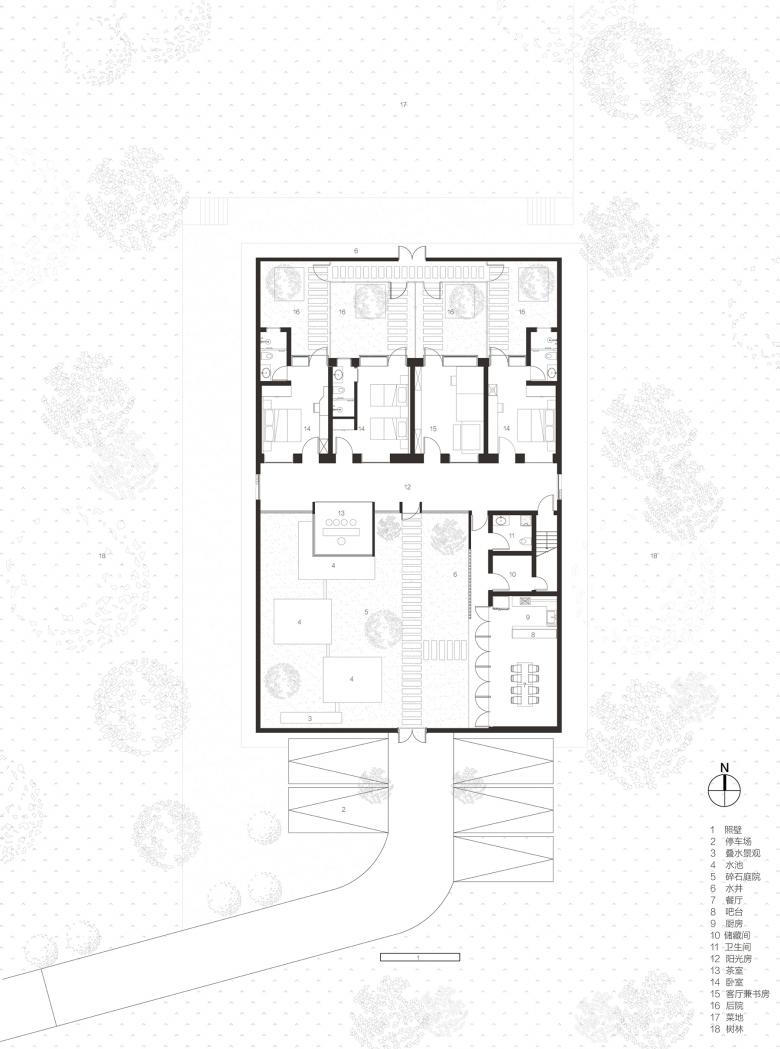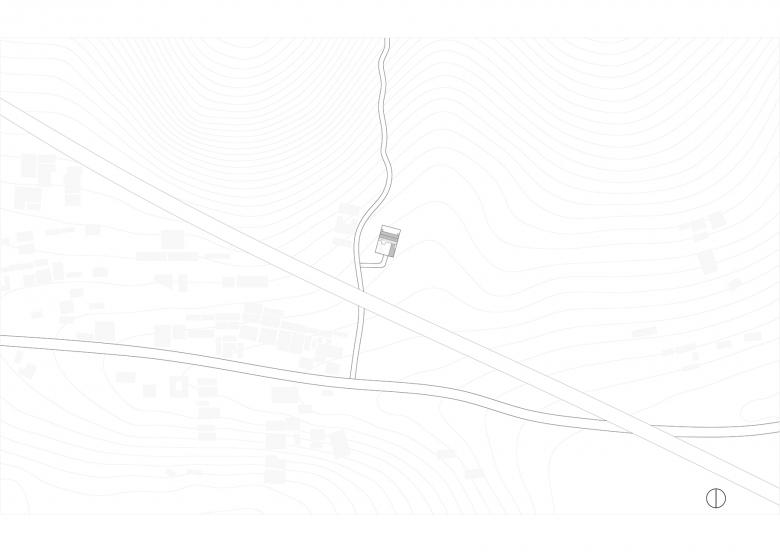The Hillside House
Tianjin
- Arquitectos
- UP Architecture | UPA
- Localização
- Guanzhuang Town, Jizhou District, Tianjin
- Ano
- 2020
- Equipa
- Zhou Chao, Deng Kechao, Cen Zixin, Mei Wei (Intern), Yang Peng, Wang Ruochen, He Qi, He Lian
The project, which was a detached farmhouse, is located in Jizhou District, Tianjin. The client advocates the spiritual realm of Tao Yuanming, a great Chinese poet in Jin Dynasty, and especially loves his masterpiece "Back to County Life". Before the renovation, he named it “The Hillside House”, which is taken from "I’ve loathed the madding crowd since I was a boy, while hillsides have filled me with joy" in that poem.
The village where the Hillside House is located is in the south side of the famous Panshan Scenic Area, with a drive less than 20 minutes from the urban areas of Jizhou District. The village is surrounded by mountains and has beautiful scenery. The village is divided into two parts by the Jin-Ji expressway crosses from the east to the west, and the original texture of the village is thus destroyed. The Hillside House is located in the northern area, on a hillside, with the southern wall of its courtyard less than 30 meters away from the expressway. There is a forest of tall poplar trees in the east, a small forest of bamboos in the west, and a vegetable plot in the north. The walls and the fences of the building are all white, like a white cloud floating on the hillside while looking from a distance.
Renovation & Growth
This is the client’s own homestead, and has been rebuilt or renovated three times by his ancestors since it was first built in the 1960s. In this process, it gradually became an L-shaped house surrounded by a rectangular courtyard. The previous house, which lacked repair for a long time, looked shabby and suffered great noise from the expressway and was difficult to live in. The client grew up here and is currently working and living in the city, but he has never forgotten this land that has fed him and plans to create a "paradise" for his parents and children.
Although it is in the countryside, the regulations and controls of the government are quite strict, which means the construction is limited within the original courtyard and the house can only be one-storey high. This is both a limitation and a challenge. It prompts us to think, while the external boundary cannot be broken and the external environment cannot be changed, how could the building grow internally and get along with the existing environment in a smart way?
Sun Room: the Protagonist of Space
The layout of the building is same as it was before, but we have re-arranged the functions. The east-west volume of the building is equipped with three bedrooms and a study, while the north-south volume is equipped with logistic rooms such as dining room, kitchen and bathroom. Then a belt-shaped sun room, part of which is enlarged to form a tea room, is placed between the two volumes to connect them. This layout not only reorganizes the relationship between the building and the courtyard, but also responds to the local climate and the need of noise reduction.
In the former house, the main room is the protagonist of the space, which is a typical organization of traditional Chinese houses. But after the renovation, the sun room becomes the real protagonist of the space. It is not only a traffic space, but also a public space for the family activities. The adults are enjoying tea in the tea room, while the children are running in the promenade. The sunlight pours in from the skylight, and the beautiful scenery flows into the room from the large floor-to-ceiling glass. In the sun room, the building and landscape are closely integrated.
Courtyard: the Extension of the Building
The building and the courtyard are a harmonious unity, with the brick wall extends from the building to the courtyard wall, which is no longer a fence in the traditional sense. In the square front yard, we add a landscape water system, where the water falling down from the fountain on the south wall passes through three pools in turn, and finally hides under the tea room, which implies the meaning of "winding river" . The back yard is strip-shaped and can be accessed from every bedroom. The ground of all yards is paved with gravel, and paths are made of bluestone slabs. The original trees are also preserved, which is the historical memory of the courtyard.
At the east end of the sun room, there is a staircase leading to the roof terrace surrounded by poplar trees, creating an excellent place to experience nature. Feeling the sun and wind, you can overlook the mountains in the north, as well as the courtyard landscape in the south. The courtyard is enriched because of the terrace, and the scenery becomes more colorful as well.
Construct a Connection
We have adopted a form of dialogue with history to do the renovation, which we call "Construct a Connection". Out of the consideration of the use of local materials and cost control, a mixed structure of brick and wood is applied in the main body of the building. In the east-west volume, the brick wall and the post-and-lintel wooden construction are mixed. The client invited a 70-year-old carpenter in the village to reproduce the wooden frame with mortises and tenons. The sloped roof also restores the style of the local house, and is equipped with a skylight. The sun room adopts a steel structure and the tea room is cantilevered, where the columns in the southwest corner are removed, highlighting the lightness of the steel structure and the contrasts with the weight of the main body.
As for materials, we have adopted a "Recycling" strategy. The stone foundation, east and west gables, and courtyard walls of the old house have been preserved. The red bricks removed from the old building are rebuilt into walls and the original glass is used as the skylight of the sun room. The tiles and wood are used to make landscape and furniture. The old materials that preserve the client's emotions and memories continue their life in the new house.
Be Quiet In The Noise
The noise of the expressway is an unavoidable problem in this project. In order to improve the quality of living, the noise must be reduced. To deal with this challenge, we adopt the following measures. The first way is to block the noise and we use three barriers to reduce it. They are trees and courtyard fences, sun room, and the wall of bedrooms and study. All glass is double glazing glass, which has good performance for sound insulation. After the completion of the project, the multi-layer barriers work well and the house can basically meet the living standards during the day and night.
The second way is to use sound to cover up the noise. That Tadao Ando used the sound of waterfalls to isolate the Garden of Fine Arts in Kyoto from the hustle and bustle of urban roads inspired us. We set up a small fountain on the wall of the south courtyard to cover up the noise of the expressway with the sound of falling water. It allows the Hillside House to be quiet in the noise and also shows the client's broad-minded attitude towards life.
Projetos relacionados
Revista
-
WENG’s Factory / Co-Working Space
3 days ago
-
Reusing the Olympic Roof
1 week ago
-
The Boulevards of Los Angeles
1 week ago
-
Vessel to Reopen with Safety Netting
1 week ago
